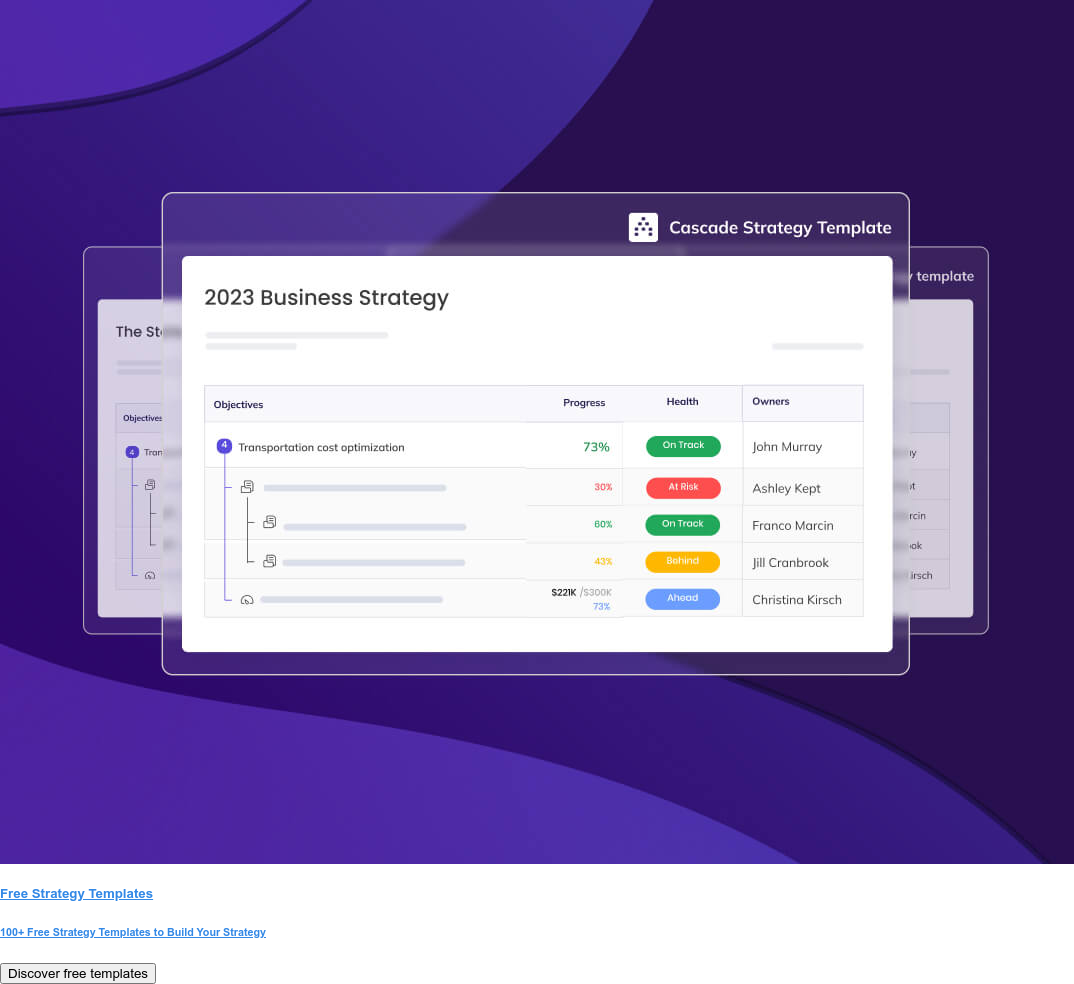What is strategy?
Strategy is a plan of actions that fit together to reach a clear destination. That destination is dictated by a set of decisions that sets the organization apart from its competitors, derives from the organization’s unique characteristics, and is hard to emulate.
It’s not an annual boardroom exercise.
It’s a unique position the organization adopts that concentrates efforts on a single, well-defined direction.
Not only does it determine the activities that lead to progress, but also what should be labeled as a distraction. Strategy entails making trade-offs. Trade-offs based on the diagnosed challenges, the available resources, and the organization’s unique strengths and weaknesses.
What strategy is not
A set of ambitious objectives is not a strategy.
A set of disconnected plans is not a strategy.
Bold and ambiguous timeworn goals like “Create the highest quality product with the lowest possible cost” or “Become the market leader” are not strategies either. Every competitor of yours is trying the exact same “strategy.” Remember, a good strategy is hard to emulate. Taking the best practices from competitors and applying them to your business is, by definition, not a strategy.
Chasing down the latest trends is also not a strategy.
And in the game of business, the single most catastrophic thing you can do is mistake the wrong things for strategy.
Good strategy, Bad strategy: The difference
Lacking a clear definition of business strategy is a serious problem inside an organization.
It makes it difficult to distinguish between good and bad strategies. Long-term success in business is always the result of a good strategy and an inspiring vision. A bad strategy can bring down even the largest behemoths of organizations.
Just ask Kodak, Blockbuster, or Enron.
What is bad strategy
A bad strategy is impossible to execute or irrelevant to the business environment.
A bad strategy that is impossible to execute focuses too much on the planning phase and assumes a perfect, almost linear operational effectiveness. If you find the optimum route, the car will quickly reach its destination successfully, right? Well, when was the last time you organized a 4-people trip, and you left on time, took no detours, had no fights, and nothing unexpected occurred? What makes you think a company of thousands of employees will have a smooth strategy-execution ride?
A bad strategy that is irrelevant to the business environment could be executable but lives outside of reality. It either fails to diagnose current challenges and the state of the market or fails to adapt fast enough to change. Look at people trying to open coffee shops in streets filled with competition, and their only strategy is to “make better coffee.” They don’t ever stand out and then wonder why people don’t flock to their coffee shop for “the best coffee in town.”
People rely on bad strategies because they adopt bad strategic practices or have an incomplete understanding of what makes a good strategy… good.
Here is a list of practices that lead to bad strategies:
- Trying to form a perfect strategic plan (Hint: there is none).
- Separating strategic planning and operational planning.
- Having no flexibility to adapt your plan.
- Lacking efficient ways to measure progress.
You know you have a bad strategy when your organization manages to just break even.
The majority of profits go to the guys with superior performance. You know, those with a good strategy.
What is good strategy (and how to make one)
A good strategy is well-researched, executable, and accessible by everyone.
There is more to a corporate strategy than just those three things, but if one of them is missing, your strategy is bad.

- A well-researched strategy paints an accurate picture of the current situation.
Through a holistic approach.
Companies with a well-researched strategic plan conduct internal analysis while having their antennas on the external environment. They have a deep understanding of their core competencies and their business model and are confident of their competitive advantage. At the same time, they’re sensitive to environmental changes so that they can adapt at lightspeed.
- An executable strategy never stagnates.
It’s a living process that evolves while your people execute it.
Stagnant strategies fail to overcome unexpected challenges and rely on a blind commitment to untested assumptions. If you keep one thing from this article, it would be this: No strategy survives first contact with reality. Keep it alive with regular reviewing habits, including frictionless reporting. Think of execution as an iterative process and not predetermined actions to achieve.
- An accessible strategy guides people’s daily decisions.
And activities.
People execute strategies. It stands to reason then that they have to know the strategy they’re expected to execute. A strategy presentation is a good start but doesn’t create traction (slides rarely do the trick). You need to expose your plan to your people so they can visit it daily. That’s how they’ll align their daily activities with the top priorities. So, if you want every person in your organization to access on-demand the most updated version of your plans, then we highly recommend using a dynamic digital platform like Cascade.
A shift from bad to good strategy starts from understanding their difference. And it’s concluded with the adoption of the right tools.
📚 Read more: The 6 Best Business Strategy Examples I've Ever Seen





.png)
.png)
.png)
.png)



